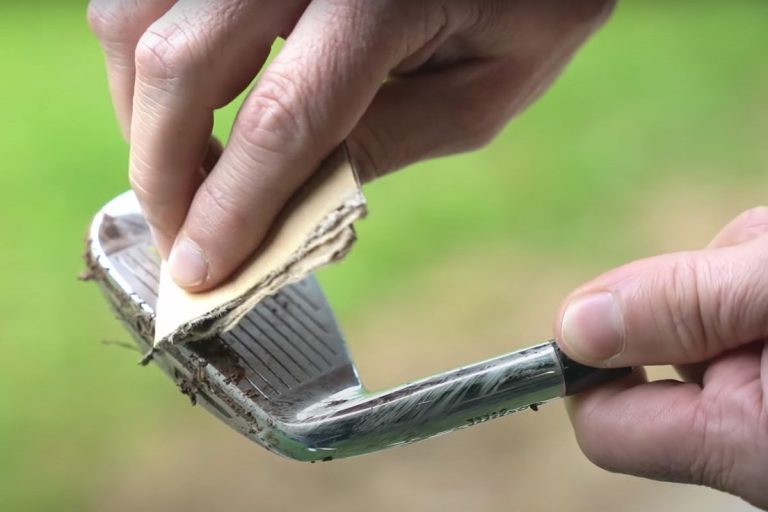Confused about golf club lofts? This beginner’s guide to golf club lofts explains angles, distances, and choices so you hit straighter, smarter shots.
when loft confusion wrecks your round
Picture this: you’re 150 yards out, you grab what “feels right,” swing confidently… and come up 30 yards short. Now you’re in the bunker, your playing partners are hiding their smirks, and you’re wondering why golf feels like a cruel prank. The truth? Most beginners don’t know what loft is, let alone how it affects distance and trajectory. That’s why this beginner’s guide to golf club lofts exists to cut through the confusion and give you confidence. Because in golf, guessing isn’t a strategy. Knowledge is.
Why loft matters more than you think
Loft is the angle of your clubface relative to the ground. Higher loft = higher ball flight, shorter distance. Lower loft = lower flight, more distance. Simple in theory. Brutal in practice.
Ignore loft, and here’s the domino effect:
● Wrong club choice → inconsistent distances.
● Inconsistent distances → missed greens.
● Missed greens → higher scores.
● Higher scores → shaken confidence. 49
● Shaken confidence → competitive disadvantage and, yes, social embarrassment.
That’s why even pros still study the golf club loft chart because precision beats ego every time.

Golf club lofts: Loft basics: your quick cheat sheet
Here’s a simplified golf club distance guide for beginners:
● Driver (9–12°): Longest distance, lowest loft.
● Fairway woods (15–21°): High launch for long approaches.
● Hybrids (18–27°): Forgiving replacements for long irons.
● Irons: ○ 3–iron (19°): Long, low, tough for beginners. ○ 7–iron (34°): The “favorite child” of irons. ○ 9–iron (41°): High flight, shorter distance.
● Wedges (45–64°): Precision tools for short game.
● Putter (3–4°): Minimal loft, designed to roll. This isn’t just trivia it’s your foundation for making smarter choices on the course.
How beginners get loft wrong (and how to fix it)
Most beginners fall into two traps:
1. Swinging harder instead of smarter. Thinking more power fixes poor club choice.
2. Ignoring loft entirely. Picking based on “favorite clubs” instead of yardage.
The fix? Learn your distances, match them to loft, and build trust in your bag. Even basic golf tips for beginnersemphasize that knowing loft saves more strokes than swinging harder.

Drills that turn loft confusion into clarity
Repetition is the antidote to confusion. Here are practical golf drills at home and on the range:
● Loft ladder drill: Hit every club in sequence, chart distances. Builds your personal golf club distance guide.
● Trajectory drill: Focus on ball flight height for each club.
● Target drill: Pick specific yardages and find the club that consistently hits them.
These exercises aren’t glamorous, but they make loft knowledge instinctive.
How loft influences more than distance
Loft isn’t just about how far the ball goes it affects:
● Spin: More loft = more backspin.
● Launch angle: Determines height and carry.
● Roll-out: Lower lofted clubs roll farther after landing.
Understanding this helps you improve golf swing accuracy by choosing clubs based on outcome, not guesswork. That’s why serious golfers read golf equipment reviews before buying small loft changes make big performance differences.

Choosing the right clubs for your game
Not every beginner needs a full 14-club set. Start simple:
● Driver (10.5°): Forgiving, solid launch.
● Hybrid (22°): Replace the tough 4–iron.
How confidence ties back to loft knowledge
Here’s the hidden benefit: knowing loft builds confidence.
Imagine stepping up with a clear plan: “150 yards, 7–iron, I’ve hit this a hundred times.” That calm certainty leads to smoother swings, better contact, and lower scores.
Confidence isn’t magic. It’s built on repetition, knowledge, and yes loft mastery.
Social credibility: the loft litmus test
Golf is social. And nothing lowers your stock faster than picking the wrong club, chunking the shot, and muttering, “Guess I should’ve used more club.” Meanwhile, the golfer who nails distances and reads loft like a language? That’s the golfer who gets invited back. That’s why the beginner’s guide to golf club lofts isn’t just about physics it’s about belonging.
Habits that keep your loft knowledge sharp
● Create your own golf club loft chart and carry it in your bag.
● Practice “loft ladders” every month.
● Update your distances as your swing evolves.
● Keep up with golf equipment reviews tech changes loft dynamics constantly.
These small habits prevent plateaus and keep your skill (and confidence) climbing.
Conclusion: Clarity Equals Consistency
Confusion kills performance. The beginner’s guide to golf club lofts isn’t about memorizing numbers it’s about building trust in your clubs, your choices, and your swing. Stop guessing. Start learning. Because every stroke saved by knowing loft is a step closer to golf that feels less like punishment and more like mastery.

FAQs
What is golf loft and why does it matter?
Loft is the angle of the clubface. It controls trajectory and distance, making it essential for shot consistency.
How can beginners learn club lofts quickly?
Carry a golf club loft chart and practice “loft ladder” drills to match distances with each club.
Do lofts affect spin and ball flight?
Yes. Higher loft increases spin and height, while lower loft produces more distance and roll.
Should beginners buy a full 14-club set?
Not right away. Most golf gear for beginners starts with a driver, hybrid, 7–iron, wedge, and putter.
Can adjustable clubs help new golfers?
Yes. Many drivers and hybrids feature adjustable lofts, making them versatile and forgiving for learning.















